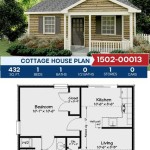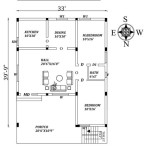Plumbing Plans for Your House in Brisbane: A Comprehensive Guide
When building or renovating a house in Brisbane, plumbing plans are crucial for ensuring a functional and efficient water system. These plans outline the layout and installation of pipes, fixtures, and appliances, ensuring compliance with local regulations and providing a roadmap for the plumbing process. This comprehensive guide will help you understand the significance, elements, and process of creating plumbing plans for your Brisbane home. ### Why Are Plumbing Plans Essential for Your Brisbane House? 1.Compliance with Regulations:
Plumbing plans are required to comply with local building codes and regulations set by the Brisbane City Council. These regulations aim to ensure the safety and functionality of the plumbing system, preventing potential hazards such as leaks, contamination, and structural damage. 2.Efficient System Design:
A well-designed plumbing plan optimizes the layout and integration of pipes, fixtures, and appliances. This results in a system that functions smoothly, reduces energy and water consumption, and minimizes the risk of future issues. 3.Accurate Cost Estimation:
Plumbing plans provide a detailed breakdown of the materials and labor required for the installation. This information helps contractors accurately estimate the cost of the project, allowing you to budget accordingly and avoid unexpected expenses during construction. 4.Simplified Construction Process:
With a plumbing plan in hand, contractors can follow a clear roadmap for the installation process. This facilitates efficient coordination among different trades, minimizing delays, rework, and costly changes during construction. ### Key Elements of a Comprehensive Plumbing Plan 1.Site Plan:
This plan provides an overview of the property, including the location of the house, boundaries, and any existing structures. It also indicates the connection points for water supply and drainage. 2.Floor Plans:
Floor plans show the layout of each level of the house, including the location of rooms, bathrooms, kitchens, and other areas that require plumbing fixtures. 3.Piping Layout:
The piping layout plan illustrates the routing and sizing of pipes for water supply, drainage, and gas lines. It specifies the materials, diameters, and connections for each pipe. 4.Fixture Schedule:
This schedule lists all plumbing fixtures, such as sinks, toilets, showers, and appliances, along with their specifications, locations, and connection requirements. 5.Drainage Plan:
The drainage plan outlines the layout and sizing of drains, waste pipes, and vents. It indicates the location of cleanouts, traps, and the connection to the sewer system. 6.Water Meter and Backflow Preventer Location:
This plan shows the location and specifications of the water meter and backflow preventer, which are essential for monitoring water usage and preventing contamination of the public water supply. ### Process of Creating Plumbing Plans for Your Brisbane House 1.Engage a Licensed Plumber:
Begin by hiring a licensed plumber experienced in residential plumbing and familiar with local regulations. They will assess your needs, conduct site visits, and gather necessary information. 2.Discuss Your Requirements:
Communicate your specific requirements, preferences, and budget to the plumber. They will help you determine the appropriate fixtures, materials, and design for your plumbing system. 3.Design and Development:
The plumber will create preliminary plumbing plans based on your discussions and the site assessment. These plans will be revised and refined until you are satisfied with the design. 4.Council Approval:
Once the plumbing plans are finalized, the plumber will submit them to the Brisbane City Council for review and approval. This process ensures compliance with local regulations and building codes. 5.Construction and Installation:
After obtaining necessary approvals, the plumber will coordinate with other trades to begin construction and installation. They will ensure that the plumbing system is installed according to the approved plans and adheres to industry standards. 6.Testing and Certification:
Upon completion of the installation, the plumber will conduct comprehensive testing to ensure the system functions properly. They will provide you with a certificate of compliance, which is required for the final inspection and handover of your Brisbane house. By following these steps and engaging a qualified plumber, you can ensure that your Brisbane home has a well-designed and efficient plumbing system that meets all regulatory requirements and provides years of trouble-free operation.
How To Obtain Before You Dig Plans

How Does The Plumbing Work In A Tiny House Aussie Houses

Hydraulic Drawings

Your Responsibilities Urban Utilities

Where Can I Find Drainage Plans For My House Soho Real Estate

Granny Flat Plumbing And Sewerage The Definitive Guide Diy

Granny Flat Plumbing And Sewerage The Definitive Guide Diy

Granny Flat Plumbing And Sewerage The Definitive Guide Diy

Where Can I Find Drainage Plans For My House Soho Real Estate

Stormwater Pipe Locator 6 Ways To Find Your Pipes








